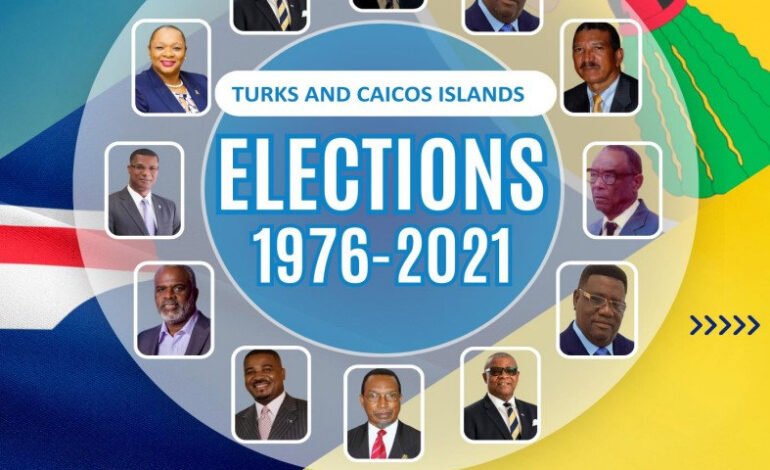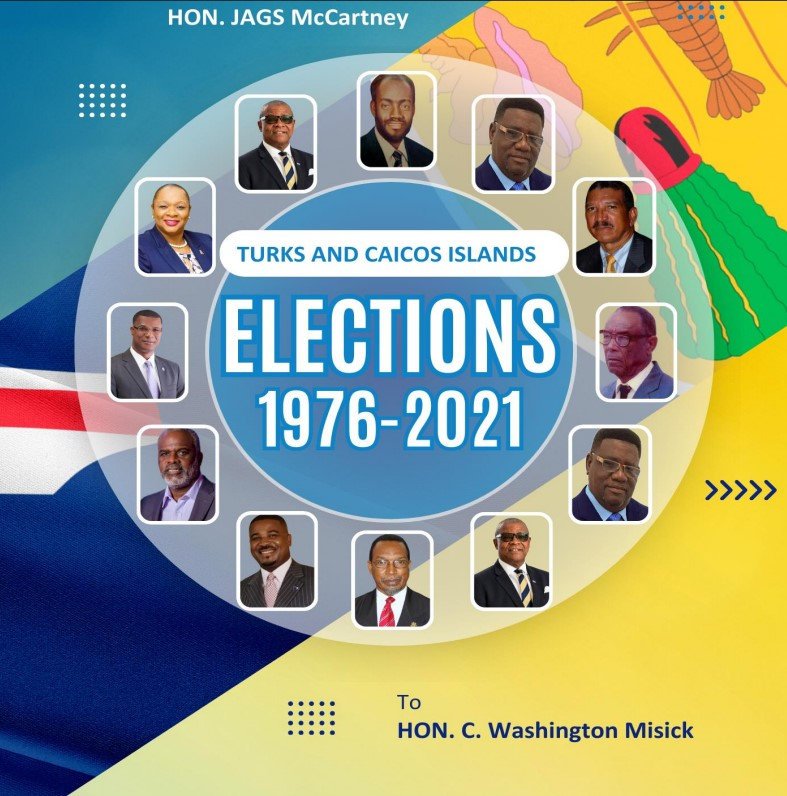
Turks and Caicos Elections: PNP's Rise, PDM's Decline, and the Evolution of Political Power (1976-2021)
The general elections of the Turks and Caicos Islands (TCI) from 1976 to 2021 present a fascinating narrative of shifting political dominance, voter engagement, and the changing fortunes of two
The general elections of the Turks and Caicos Islands (TCI) from 1976 to 2021 present a fascinating narrative of shifting political dominance, voter engagement, and the changing fortunes of two key players: the Progressive National Party (PNP) and the People’s Democratic Movement (PDM).
This review analyzes major electoral outcomes, party performance, and emerging trends shaping the archipelago’s political future.
1976: Marked the birth of the two-party rivalry. The PDM, under J.A.G.S. McCartney, secured 5 seats, while PNP won 4, and Independents took 2.
1980: The PNP turned the tables, securing 8 seats to PDM’s 3, handing Hon. Norman Saunders his first Chief Ministership, also showcasing growing public support in regions like North Caicos, South Caicos, Grand Turk and Providenciales.
1984: Similar to 1980, PNP retained control with 8 seats to the PDM 3.
1988: The PDM returned to power by achieving a landslide victory, winning 11 seats against PNP’s 2, marking the height of its dominance, and thereby giving Oswald Skipping his own mandate.
1991: The PNP Turned the tables in 1991, winning 8 seats, giving Washington Misick his first shot at government leadership. However, the PDM’s resilience was evident as they maintained a foothold with 5 seats.
1995: The PDM roared back to power with 8 seats to PNP’s 4, birthing what would have been a long and illustrious career in political leadership for Hugh Derek Taylor. There was a victory for an independent candidate.
1999: The PDM retained power with 9 seats in 1999, to the PNP’s 4, improving performance at the polls.
2003: In 2003, Taylor led the PDM again to victory in an election that was clouded with controversy, scraping through by a razor-then 7-6 margin. But a set of by-elections later that year, resulted in the PNP securing 8 seats to the PDM 5, handing Mike Misick his first government leadership reins.
2007: if the 2003 win for the PNP was in doubt, the 2007 erased all uncertainties, as the PNP trounced the PDM 13 to 2.
Direct UK Rule Between 2009 -2012: From 2009 to 2012, the TCI was directly ruled by the United Kingdom through an appointed governor, during which the country’s Constitution was changed. The decision by the United Kingdom followed a commission of inquiry, which ruled that the Misick administration was involved in corruption.
During that period there were also changes to the political boundaries resulting in the cutting back on constituency seats or electoral districts, for the introduction of what is now know as At-Large or Island-wide constituencies. At-Large constituency means the entire country votes for a candidate.
2012: In 2012 when the country retuned to elective politics, it was a closely contested election, with the PNP winning 7 seats and PDM taking 6. However, at-large seats favored PDM slightly…3-2.
2016: The PDM regained power decisively, securing 10 seats compared to PDM’s 5, which saw the introduction of the country’s first female premier in Hon. Sharlene Cartwright Robinson.
2021: The PNP swept the election, winning 14 out of 15 seats. This overwhelming victory solidified its control and marked PDM’s steep decline.
Key Trends and Takeaways
1. Voter Turnout and Registration
From 2,995 registered voters in 1976 to 8,581 in 2021, voter registration has steadily increased, reflecting demographic growth and greater political awareness. Voter turnout peaked at 86% in 2003 but saw a slight decline to 76.7% in 2021. The fluctuations suggest varying levels of political engagement depending on the prevailing economic and social climate.
2. PDM’s Early Dominance and Decline
PDM’s success 1976 and the late 1990s was driven by its grassroots organization and appeal in key districts. However, internal divisions, leadership challenges, and failure to adapt to changing voter concerns led to its decline. The 2021 election, where the PDM won only 1 seat, underscores the magnitude of this fall.
3. PNP’s Resurgence and Strategic Gains
The PNP’s resurgence in 2007 marked a critical shift. By focusing on urban centers like Providenciales and addressing economic development issues, the party built a broad coalition of support. Its 2021 landslide victory reflects the effectiveness of its grassroots campaigns and public trust in its leadership.
4. Independent Candidates and Minor Party Impact
Independent candidates have historically played a marginal role, primarily influencing closely contested districts. Their significance diminished over time, as the two-party system became firmly entrenched.
Providenciales and Grand Turk: Key battlegrounds where development policies and urbanization played significant roles in shifting voter allegiances.
North and Middle Caicos: Traditionally more stable, with consistent voter loyalty but recent signs of shifts toward the PNP.
How will the PNP Fear in the 2025 Polls
Leadership: It will be seen whether the Charles Washington Misick’s leadership resonated with voters, particularly in addressing post-pandemic recovery. The PNP’s emphasis on development, infrastructure, and economic growth appear to appeal to urban and family islands voters, but will it translate into the success at the polls?
The Road Ahead for PDM
If the PDM to win the election, it has to prove to the voters that it has firm organizational foundation. Failure to present a compelling alternative will result in another defeat. The voters will decide at the polls whether the PDM has successfully convinced the public that it has effectively undergone leadership renewal, internal cohesion, and a clear policy platform. The PDM’s performance this time around will definitely test the survival skills of its new leader Hon. Edwin Astwood, who was the health minister in the Sharlene Cartwright Robinson Administration.
Challenges Ahead for PNP
While the PNP enjoys a strong mandate, challenges remain. In the eyes of the people, have they ensured long-term growth and addressing development disparities? Have they maintained transparency and good governance to avoid the pitfalls that previously plagued ruling parties?
The electoral history of the Turks and Caicos Islands from 1976 to 2021 highlights the dynamic nature of its politics, driven by shifting voter sentiments, leadership changes, and regional influences.
The PNP’s recent dominance reflects its ability to adapt and connect with voters, while the PDM’s decline underscores the importance of strategic leadership.
As the hours wind down to the February 7, 2025, election, both parties are hoping voters will be their handsome prince, making them the stars of the ball like Cinderella, rather than facing a Humpty Dumpty-style fall. This time, recovering from a collapse would be much harder.
Data Source: Statistics Department
Analysis: Newslinetci





